#quickbow 1
Explore tagged Tumblr posts
Text

Hunted:The Demon’s Forge™ Review
1. Introduction
Game Title: Hunted: The Demon’s Forge™
Release Date: June 3, 2011
Game Type: Third-person linear fantasy action-adventure
Playtime: 12-15 hours
Overview: Hunted: The Demon’s Forge™ is a third-person hack-and-slash and shooting action game set in a typical medieval fantasy world. Players control a human warrior and an elven archer, working together to fight off orcs and undead, while exploring dungeons to solve puzzles and acquire treasures.
2. Gameplay
Core Mechanics: Co-op Combat:
Players take control of Caddoc, a male human warrior, and E’lara, a female elven archer. When controlling Caddoc, players can use swords, axes, or maces as primary melee weapons and a crossbow as a ranged secondary weapon. His combat experience is reminiscent of classic third-person hack-and-slash games. When controlling E’lara, players use a quickbow, medium bow, or sniper bow as primary ranged weapons and a sword as a secondary melee weapon. Her playstyle is more akin to the tactical combat in Gears of War.
Dungeon Exploration and Puzzles:
Throughout the game, there are hidden dungeon entrances. Inside these dungeons, players can solve puzzles to unlock enchanted weapons. Specifically, three hidden dungeons contain colored orbs, and by collecting all three orbs, players can obtain the ultimate weapons—the Crystal Bow and Crystal Sword—in Chapter 6, the final chapter.
Missions and Objectives: Hunted: The Demon’s Forge™ features a linear mission structure with seven levels, including the prologue. Each level has a specific main objective, and while progressing through the main storyline, players can also rescue prisoners, collect Death Stones to uncover the story background, gather Dragon Tears, and solve puzzles to unlock hidden locations and enchanted weapons.
Progression and Rewards: Weapon Skills and Magic:
As players progress, they can collect crystals by defeating enemies or picking up shards throughout the levels. By spending these crystals, Caddoc can learn three melee weapon skills, and E’lara can learn three ranged weapon skills. Both characters can also learn three magical abilities. Magic skills can be charged up to temporarily enchant weapons, increasing damage for the entire team.
Talent System:
Throughout the game, actions such as Caddoc’s melee kills, E’lara’s ranged kills, cooperative kills, Fury kills, finishing kills, and using healing potions are tracked. When certain milestones are reached, new talents are unlocked, such as increased damage for Caddoc’s melee weapons or enhanced ranged damage for E’lara. Additionally, collecting Dragon Tears can boost the power of weapon skills and magic, while also reducing mana consumption.
Innovative Elements: Hunted: The Demon’s Forge™ innovatively combines third-person hack-and-slash combat with third-person shooting mechanics and includes a cooperative gameplay element along with dungeon exploration. A distinct AI companion accompanies players throughout the game, helping with magic enchantments and providing health restoration when needed, somewhat similar to the companion system in BioShock Infinite. However, the implementation here feels less impactful.
3. Story and Worldbuilding
Story Overview: Players take on the roles of Caddoc, the warrior, and E’lara, the archer. Caddoc is haunted by dreams of a mysterious woman, and during their adventures, the duo encounters Seraphine, a mysterious witch who looks identical to Caddoc's dream woman. Seraphine claims to be the daughter of the mayor of Dyfed and asks Caddoc and E’lara to travel to Dyfed and find her father. Upon arriving, they discover that Dyfed is under attack by the Wargar orc tribe. After rescuing the mayor, Caddoc and E’lara are tasked with rescuing the mayor’s daughter, who has been captured by the orcs. As the duo follows the orc tribe’s trail, they gradually uncover the truth behind the conflict.
Character and Story Depth: The main characters in the game are Caddoc, E’lara, and the enigmatic Seraphine. While the two protagonists engage in continuous dialogue throughout the game, it’s unfortunate that the story does not deeply explore their personalities. The characters seem more like puppets driven by objectives, hacking through orcs and skeletons without much emotional depth or character development.
Worldbuilding: The game takes place in a classic medieval fantasy world, populated by humans, elves, orcs, and dragons. Players will travel to locations like Dyfed, Govad, Llyr, and Kala Moor, which include medieval towns, ancient underground ruins, jungles, and besieged cities. The world-building is enhanced through the use of Death Stones, which provide backstory on ancient wars involving the Dyfed Kingdom and Kala Moor. Although the developers put effort into creating a believable medieval fantasy world, the lack of a sequel means that this world was not fully expanded upon.
4. Art Style
Visual Style: Hunted: The Demon’s Forge™ adopts a realistic art style. The cities of Dyfed and Llyr are modeled after real European medieval cities, rather than grand, epic fantasy architecture like in The Lord of the Rings. Only in the final chapter, Kala Moor, do the visuals shift to a more distinctly fantastical style. The dungeon areas, such as the Dungeon of Dyfed, have a classic fantasy dungeon aesthetic with eerie, skull-filled environments and puzzles.
Design Consistency: The overall art direction is consistent, with architectural and weapon designs based on real-world medieval Europe, spiced up with occasional fantastical elements. However, the overall visual identity lacks a strong and unique style.
Attention to Detail: Unfortunately, due to the technical limitations of Unreal Engine 3 and the time period of its release, the game’s environmental and character detail is not particularly impressive. The facial details of Caddoc and E’lara are basic, and the cutscenes often feel awkward and lack polish.
Visual Impact: The game does not offer particularly striking visual effects. If you are looking for an aesthetically unique experience or a game with strong visual impact, Hunted: The Demon’s Forge™ may not be the right choice.
5. Graphics and Sound
Graphics Performance: The graphics are on par with the mainstream titles of the Xbox 360 era, but there is nothing remarkable about the visual presentation. The game does not have a unique artistic style or cutting-edge technical performance.
Sound Effects and Music: The weapon hit sound effects are decent, but overall, the game lacks memorable audio cues. The final battle against the last boss is accompanied by a grand and stirring musical track, which stands out as the most impactful moment in the soundtrack.
Technical Issues: The game occasionally suffers from UI glitches, with the keyboard and controller interfaces conflicting and causing issues during gameplay.
6. Controls and UI
Ease of Controls: The controls are straightforward and easy to pick up, allowing players to get into the action within 1-2 minutes without needing a tutorial.
UI Design: The combat UI is simple and clear, but the menu system is clunky, with unnecessary information making navigation more cumbersome than necessary.
7. Difficulty and Challenge
Difficulty Settings: The overall difficulty of Hunted: The Demon’s Forge™ is moderate, with most bosses being manageable without dying. Caddoc’s playstyle is more difficult due to his need to take damage in close-quarters combat and lack of abilities to break enemy shields. E’lara, on the other hand, is easier to play, with the ability to take cover and shoot from a distance, along with skills that can freeze enemies or break shields. Her damage output is also higher than Caddoc’s. It is recommended to choose E’lara as the main character during the first playthrough.
Challenge: The game features a variety of enemies, including ranged attackers, light and heavy shielded enemies, and minotaur-like creatures. Players must adapt their tactics to different types of foes, offering some challenge without being overwhelming.
Learning Curve: The prologue serves as a comprehensive tutorial, introducing players to the game’s mechanics. Once players get past the tutorial, no additional complex mechanics are introduced, so players can continue without needing to learn anything new as they progress through the game.
8. Innovation and Drawbacks
Innovations: Hunted: The Demon’s Forge™ blends third-person hack-and-slash and shooting mechanics with a cooperative multiplayer system and dungeon exploration. While these elements are innovative within the context of fantasy action games, the mechanics lack depth and fail to fully explore their potential.
Drawbacks: The skill and equipment systems are fairly basic, offering limited character build options. Once players finish the game, there is little incentive to replay it, as the game lacks replayability through deeper customization or complex builds.
9. Conclusion and Rating
Overall Evaluation: Hunted: The Demon’s Forge™ offers decent combat and good AI companion interactions, making the journey engaging enough. However, once the game is completed, there is little desire to return for a second playthrough.
Recommendation: This game is best suited for players who enjoy linear, level-based action games. It doesn’t feature side quests, expansive maps, or in-depth character builds. Instead, it offers a straightforward and satisfying hack-and-slash experience.
Rating: 7/10
1 note
·
View note
Text
@quickbow
“Wonderful day, isn’t it?”
The newcomer spat out those words with little consideration, leaning on his wooden cane as he stood in a relaxed manner, though one that retained a certain feeling of class.
Maybe he’d try to scam her if he had his bearings, but alas it’s not that time quite yet.
“I’m still settling in here, and that gaping hole in our dear city quite concerns me! Are there no security measures in place to stop people from tumbling down in a stupor?”
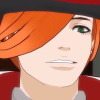
1 note
·
View note
Text
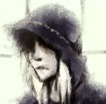
“....”
-> Text Sera ‘Hey’

-> Text Sera ‘Hey’
-> Text Sera ‘Hey’
-> Text Sera ‘Hey’
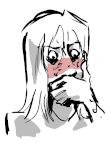
To: Sera @quickbow
From: Lothric and Lorian
[txt] Hey
#quickbow#for the event#hes worried about her#but do they know each other well enough for him to be worried??#what if being worried is creepy????#security breach part 1
5 notes
·
View notes
Text

@quickbow said: 1 & 14 for random chara questions!
1. What’s one memory with a friend that you’re fond of?
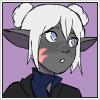
“Oh!! One time for my dad’s birthday, we went to a waterpark with all kinds of fun slides and stuff. My friend Pearls and I put bath bombs and bubble bath in the wave pool and flooded the whooooooole first floor of the hotel in bubbles. The hotel got a little bit mad, but Pearls and I had fun.”
14. What do you do to relax?
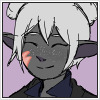
“Hm... I guess movies are always good, and spending time with my friends and people I care about. I also like to draw a lot! And meditating is always good for elves, too, even tho I’m not super good at staying focused.”
1 note
·
View note
Text

@quickbow inquired ; ( I love your portrayal of Flora! it's been a while since I played a PL game and honestly you're making it hard to resist pulling out my games :) you capture Flora's exuberant personality and energy really well, while also acknowledging her sensitivities and depth. keep rockin' it! )
1-800-HOW’S MY PORTRAYAL? ( accepting! )
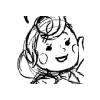
now... i’m not saying you should give into the temptation but... y’know... play them. flora is very dear to my heart as i have loved her ever since curious village came out! my grandma and i have been fans of the series since the first game, and played them all in chronological order of release ( including watching the film ) but that might’ve been because flora was the only female support character for the first three games before emmy came around! still, there is lots of love for the “original” girl, and i love being able to apply my own headcanons / detailed studies on her because level 5 doesn’t give us much besides her required role and a few things to bash her on. glad to see that others are enjoying her too!
1 note
·
View note